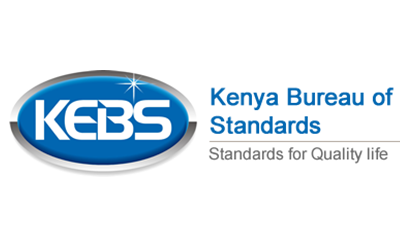Non-Destructive testing
Kenya Bureau of Standards has established a NDT Centre at its premises in Nairobi.
The centre was established through a technical co-operation and assistance from IAEA (International Atomic Energy Agency) through the project KEN8/009-Establishing a National Non-Destructive Testing Centre.
The purpose of the project was the establishing a National Non-Destructive Testing Centre with the aim of offering NDT services in inspection and training.
The field of Nondestructive Testing (NDT) is a very broad, interdisciplinary field that plays a critical role in assuring that structural components and systems perform their function in a reliable and cost effective fashion. NDT technicians and engineers define and implement tests that locate and characterize material conditions and flaws that might affect performance in service. These tests are performed in a manner that does not affect the future usefulness of the object or material. In other words, NDT allows parts and materials to be inspected and measured without damaging them. Because it allows inspection without interfering with a product’s final use, NDT provides an excellent balance between quality control and cost-effectiveness.
Importance of NDT
NDT plays an important role in the quality control of a product. It is used during all the
stages of manufacturing of a product.
It is also used to monitor the quality of the:
(a) Raw materials which are used in the construction of the product.
(b) Fabrication processes which are used to manufacture the product.
(c) Finished product before it is put into service.
KEBS offers six NDT methods that are commonly used for inspection. These methods are visual inspection, penetrant testing, magnetic particle testing, eddy current testing, radiography, and ultrasonic testing.
These methods are briefly described below.
Visual and Optical Testing (VT)
Visual inspection involves using an inspector’s eyes to look for defects. The inspector may also use special tools such as magnifying glasses, mirrors, or borescopes to gain access and more closely inspect the subject area. Visual examiners follow procedures that range from simple to very complex.
Penetrant Testing (PT)
Test objects are coated with visible or fluorescent dye solution. Excess dye is then removed from the surface, and a developer is applied. The developer acts as blotter, drawing trapped penetrant out of imperfections open to the surface. With visible dyes, vivid color contrasts between the penetrant and developer make “bleedout” easy to see. With fluorescent dyes, ultraviolet light is used to make the bleedout fluoresce brightly, thus allowing imperfections to be readily seen.
Magnetic Particle Testing (MT)
This NDE method is accomplished by inducing a magnetic field in a ferromagnetic material and then dusting the surface with iron particles (either dry or suspended in liquid). Surface and near-surface imperfections distort the magnetic field and concentrate iron particles near imperfections, previewing a visual indication of the flaw.
Eddy Current Testing
Electrical currents are generated in a conductive material by an induced alternating magnetic field. The electrical currents are called eddy currents because they flow in circles at and just below the surface of the material. Interruptions in the flow of eddy currents, caused by imperfections, dimensional changes, or changes in the material’s conductive and permeability properties, can be detected with the proper equipment.
Radiography (RT)
Radiography involves the use of penetrating gamma or X-radiation to examine parts and products for imperfections. An X-ray generator or radioactive isotope is used as a source of radiation. Radiation is directed through a part and onto film or other imaging media. The resulting shadowgraph shows the dimensional features of the part. Possible imperfections are indicated as density changes on the film in the same manner as a medical X-ray shows broken bones.
Ultrasonic Testing (UT)
Ultrasonics use transmission of high-frequency sound waves into a material to detect imperfections or to locate changes in material properties. The most commonly used ultrasonic testing technique is pulse echo, where sound is introduced into a test object and reflections (echoes) are returned to a receiver from internal imperfections or from the part’s geometrical surfaces.
Equipment
KEBS has acquired the following equipment for NDT inspection:
Radiography: Two industrial X-ray machines
Ultrasonics: 2 digital sets
Magnetic particles: Magnetic bench and portable yoke.
Penetrant testing: Various Dyes, Developers & Cleaning chemicals
KEBS ensures that the above equipment are maintained and calibrated.
NDT Personnel
KEBS NDT personnel are competent and have the necessary experience to carry out NDT services. The personnel have been trained, qualified and certified to level 3 and level 2 respectively according to ISO 9712:2005: Non-Destructive Testing-Qualification & Certification of Personnel. The certificates of the personnel are valid to offer professional services.
Standardization & Quality
The NDT inspections are carried out using recommended practices, process standards, procedure, codes and specifications. The practice ensures a quality system is followed adhering to quality aspects, control and assurance.
Services
The above services are offered both at KEBS NDT Centre as well as at site.
